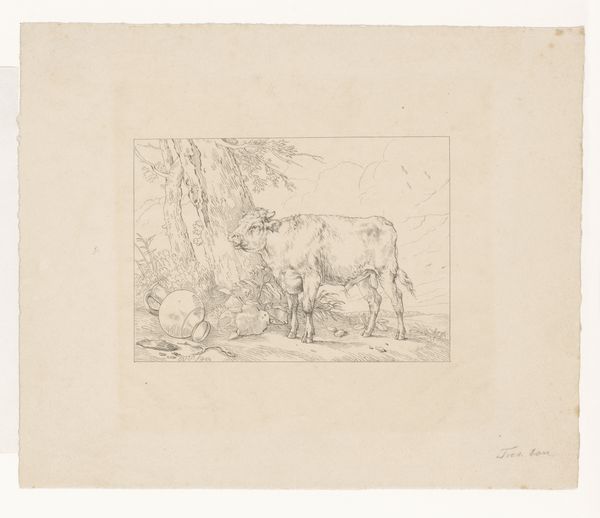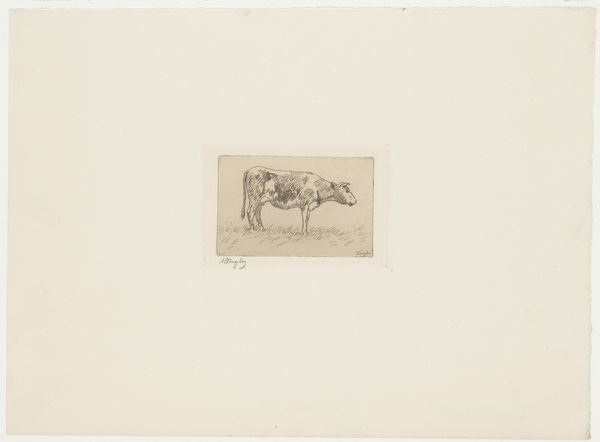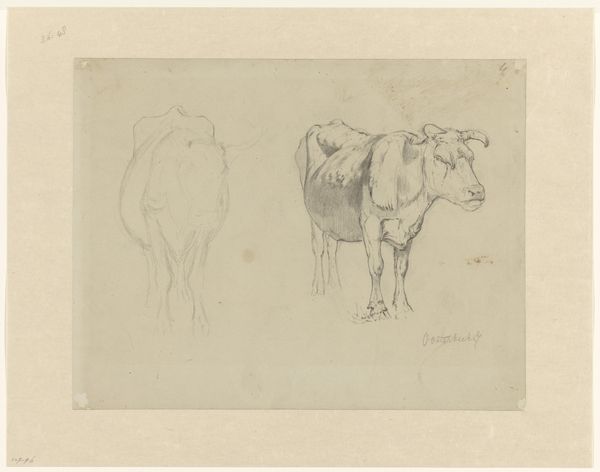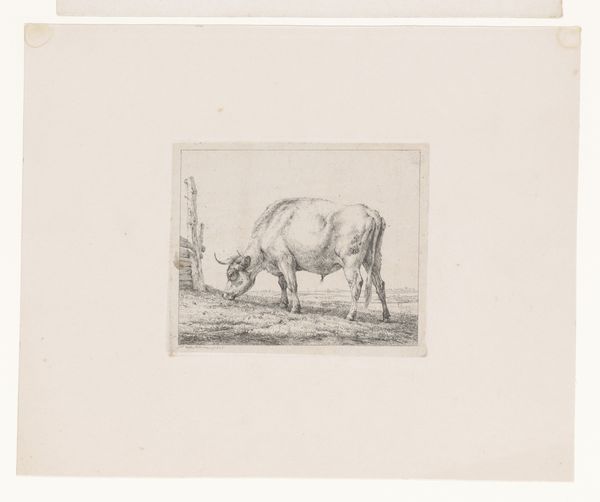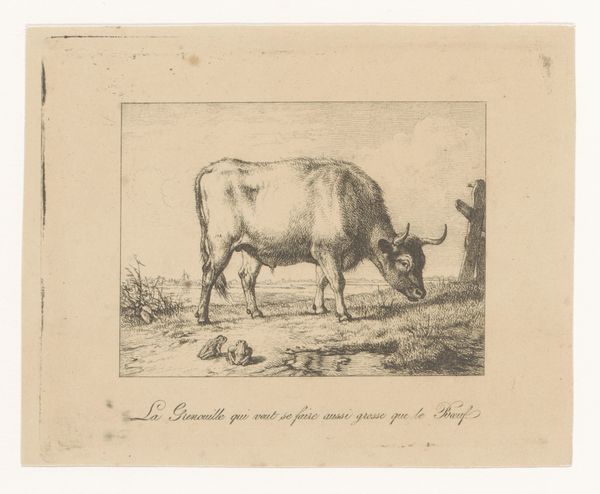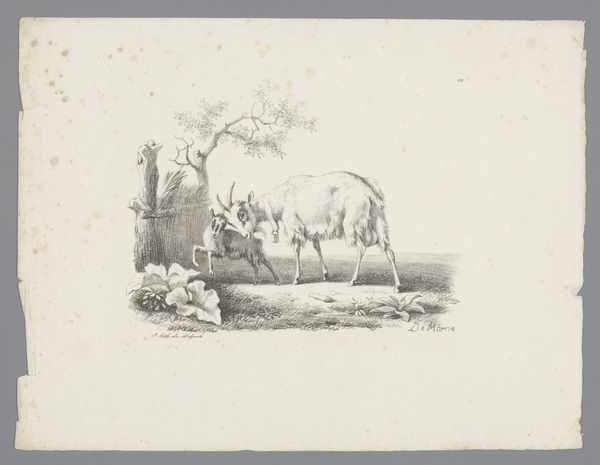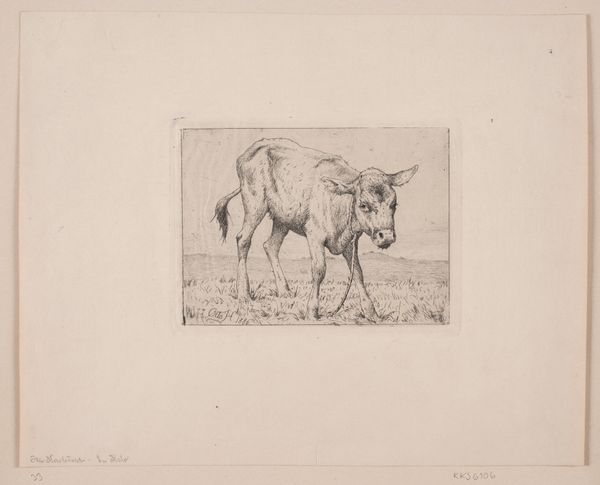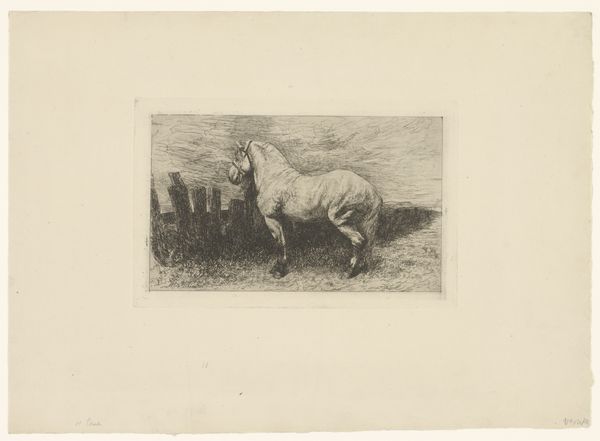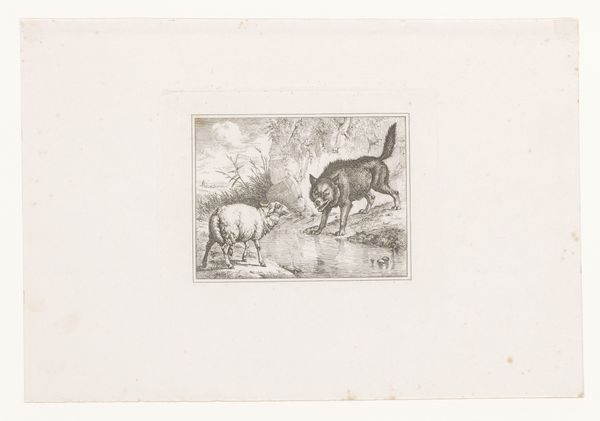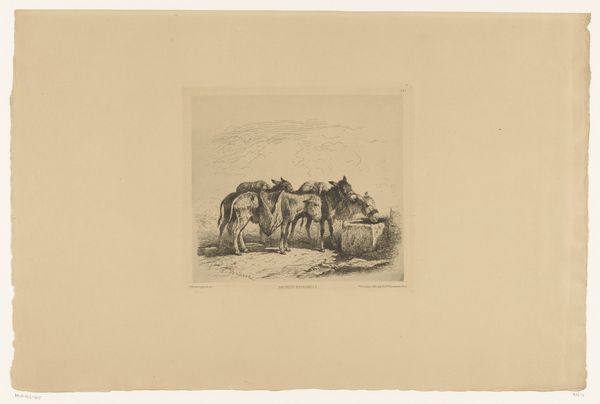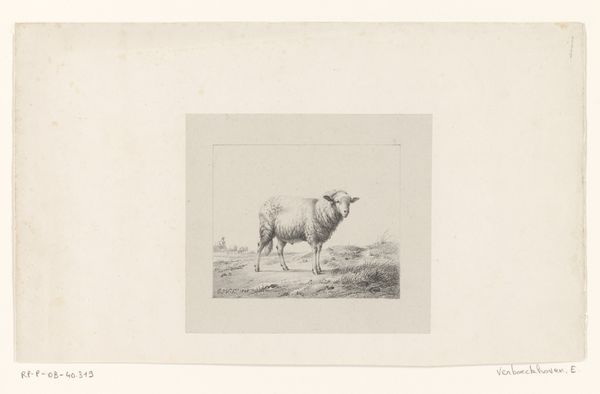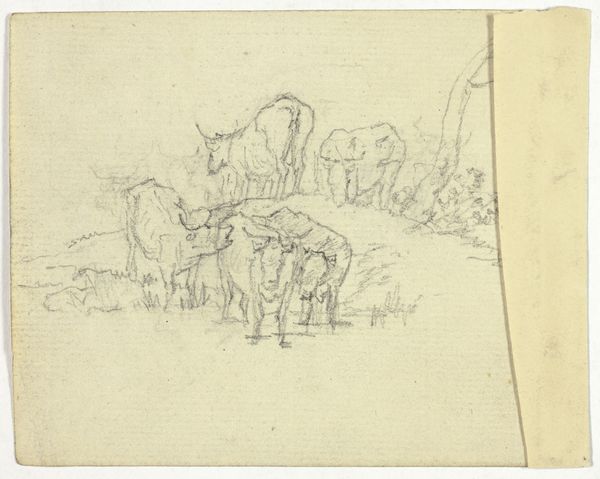
drawing, paper, pencil
#
drawing
#
pencil sketch
#
landscape
#
figuration
#
paper
#
pencil
Dimensions: height 113 mm, width 168 mm
Copyright: Rijks Museum: Open Domain
Curator: Let’s consider Jan Mankes’ drawing, "Geit op oever," created sometime between 1912 and 1913. It's rendered in pencil on paper. What strikes you initially? Editor: It has a surprisingly pastoral feeling, considering it's just a pencil drawing. The subdued palette lends it an intimate quality, like a whispered observation. The lone goat dominates the composition. I wonder what message the artist is trying to convey here by including it in its natural habitat? Curator: Mankes, though working during a time of intense social change, often returned to simple, rural subjects. Think of this drawing within the context of early 20th-century artistic responses to urbanization and industrialization. There’s a distinct choice to focus on the agrarian. Editor: But is it a romanticization, or a realistic portrayal? The goat, though central, is rendered with a detached almost clinical line. It seems more observed than celebrated. And what of the title? What significance is imbued with the deliberate selection of this "Geit op oever?" Is this Mankes representing an experience that includes social commentary on human/animal interrelation? Curator: Absolutely, it invites us to consider human relationships with nature. Mankes’ pacifist and deeply spiritual leanings also likely informed his attraction to this quieter subject matter, removing himself and audience from larger geopolitical conflicts of the time. This could be regarded as a type of art therapy for not only himself but the viewer as well. The role of the artist could have also been perceived as an Activist who promotes the well-being of our cohabitants within their work. Editor: That resonates. By stripping away overt narratives and grandeur, Mankes directs our gaze to the quiet dignity of the animal world. The drawing seems to ask us to contemplate the ethics surrounding our treatment of the Earth and other life forms we share space with, doesn't it? What better message can you present through such delicate execution. Curator: Yes, "Geit op oever" isn't just a simple sketch of a goat, is it? Editor: Far from it. It's an invitation to reflect on how we position ourselves within larger ecologies and power dynamics and invites a contemporary, introspective reaction, just as Mankes must have experienced in his world.
Comments
No comments
Be the first to comment and join the conversation on the ultimate creative platform.

